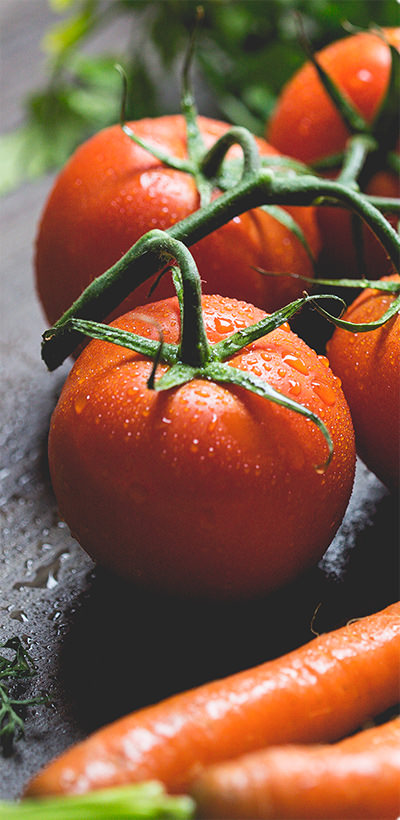Catnip
Nepeta cataria. Although catnip is most widely used in toys for kitty, it can also be used in salads as a green or for a relaxing tea. Height 3’. Approx. 850 seeds/pkg.
Scroll down for more details and growing information.

Details
Growing Information
Planting:
Plant seeds 1⁄8 inch deep in warm, dry, well drained sandy soil. Thin to 12 inches apart.
Starting Seeds Indoors:
When starting seeds indoors, a soilless, pre-mixed growing medium is best to use. Soilless mixes are generally made up of peat, perlite (ideal for improving drainage) and vermiculite (aids in water retention), along with added nutrients. These mixes are light and sterile which makes them best for successful germination and growing on. After germination, the tiny seedlings can be separated and transplanted into larger containers. Light levels during germination is important for most flower seed varieties unless otherwise specified. Most plants can be grown in fiber pots as mentioned. Some vegetables, such as lettuce and the brassica family (cabbage, cauliflower, broccoli and some oriental vegetables), can be directly sown into 1″ cells with one plant per cell. Growing in cell packs helps to eliminate root disturbances at the time of transplanting.
Soil Temperature:
Most seeds germinate at a soil temperature of 18-22°C. Keeping the temperature within this range can be hard, especially for seeds like peppers which take more than a week to germinate. Regular air temperature is generally warmer than the soil temperature and is not sufficient enough to warm the soil. For best results, try using a propagation mat, heating cable or a hotbed.
Soil Moisture:
The seed needs water to help soften the seed coat and stimulate the root development. Once the root has penetrated into the soil, the young seedling emerges from the soil towards the light. If the soil is allowed to dry during this process, the germination will be delayed or, in most cases, ended. To keep the soil moist, mix the growing medium with water, enough so that if a handful is squeezed, a small dribble of water will run out. After mixing, sow your seeds accordingly and then cover the containers with clear plastic, this can be anything from freezer bags, plastic wrap, or the clear domes which come with some of the large holding trays. Using the plastic covering will help to keep the moisture and humidity in the soil. After germination, be sure to remove the plastic and place plants under grow lights.
Lighting & Fertilizing:
Lighting is critical when starting plants indoors. Without sufficient light, your plants will become tall and leggy, which in turn will make them prone to bending and breaking. When growing plants indoors, make sure you have at least a bright south facing window along with an adjustable fluorescent light suspended from the ceiling, or use a table top or shelf style of lighting stand to hang over the seedlings. Young seedlings will require 16 hours of light and the plants must be 3-4″ from the lights at all times for proper growth. Feeding plants, whether they are in the garden or growing as transplants indoors, is important. You will need to start fertilizing young seedlings with a mild or small dose of a balanced fertilizer. Some fertilizers include fish emulsion, compost tea and blended fertilizers such as 20-20-20 or 15-30-15. Whichever fertilizer you use, be sure to dilute to half the strength for the first few feedings and then gradually work up to full strength. Feed plants weekly.
Seeding Outdoors & Transplanting:
When direct seeding, overseed to ensure you will have sufficient germination. After germination, thin seedlings to the desired spacing. If conditions are hot and dry and you plan to direct seed, it is best to plant in the evening. Open the drill and water the soil, plant the seed and then cover the seed over. This usually works well for summer planting to ensure rapid and even germination.
As with any new plant introduced to the garden, watering is crucial to establish a good root system. Be very vigilant about weeds so they don't take over or compete with your new seedlings. Mulching plants helps to conserve and hold moisture in the soil, slows weed growth, and depending on the crop, keeps the soil warm or cool. Various types of mulches include straw, leaves, grass clippings or a generous layer of compost. Black plastic mulches that now come in a convenient biodegradable form are used to draw heat into the soil for crops that prefer a long warm season such as tomatoes, peppers and melons. Flower beds are generally mulched with shredded bark no thicker than 2″. Keep mulch away from stems and crowns to prevent rotting. A winter mulch can be applied to protect newly planted or tender perennials. This can be straw, evergreen boughs, leaves or eelgrass.
We often refer to hardening your transplants prior to planting in your garden. When setting your plants outdoors it is recommended to find a sheltered, part sun location. This will be an ideal setting for your plants to adapt to the outdoors preventing shock or stress. If the evenings are cool, plants may need to be moved indoors overnight and set back out once temperatures warm.
Growing:
Catnip spreads rapidly so provide it with adequate space. The plants should be cut back each year to avoid a straggly appearance. Protect small plants from cats until well established. Take cuttings in spring only. Self-sows freely. Harvest young leaves and flowering tops when fully open, before they turn brown.



